Introduction
Ectoparasites have a major effect on the husbandry, productivity and welfare of livestock. These obligate parasites live on, puncture, or burrow into the surface of their host's epidermis, to feed or shelter (1). Ectoparasites are responsible for economic losses to livestock producers.
Directlosses
Direct losses are a result of discomfort and damage caused by the parasites. Discomfort results in drops in milk production and retarded growth rates. Ticks, mites blowflies and sheep keds cause direct damage to skin and other subcutaneous tissues. The presence of salivary and fecal antigens from burrowing ectoparasites can result in significant hypersensitivity in some animals. Feeding activity of the ectoparasites may result in significant blood loss, secondary infestations, pruritus, excoriation and in some cases premature death (2).
Indirect losses
Indirect losses are due to diseases transmitted by ectoparasites (3, 4, 5&6).
- Tick borne diseases - Babesiosis, Theileriosis, Anaplasmosis, Dermatophilosis and Heart Water
- Flies - transmit Mastitis and keratoconjunctivitis, Trypanosomiasis and other diseases
- Midges - transmit Bluetongue, African Horse Sickness and other diseases
Etiology of Ectoparasites
A number of ectoparasites are associated with livestock. They are categorized as:
1. Ticks
Ticks are responsible for major economic losses amongst livestock in the world and have adverse effect on livestock host in several ways (7) and parasitize a wide range of vertebrate hosts, and transmit a wider variety of pathogenic agents than any other group of arthropods (8).
The life-cycle of ticks consists of four stages; egg, larva, nymph and adult. The larva and nymph have to take a blood meal from a host before they are able to moult to the next stage. Some species pass their entire life on the one host, others pass different stages of the cycle on successive host, and others are parasitic only at certain stages. Adult ticks require blood for reproduction. They are able to survive for up to two years without feeding. Once they attach to a host they feed for about a week before mating. The female then lays eggs. One-host ticks are more easily controlled than those which pass part of their life cycles away from the host. A list of single and multiple host ticks is shown in Table 1.
Table 1 Single and multiple host ticks (10)
Damage caused by ticks
(1) Tick-bite paralysis
Acute ascending flaccid motor paralysis caused by the injection of a toxin by certain ticks while feeding. Examples are paralysis caused by the feeding of Dermacentorandersoni, sweating sickness caused by Hyalommatruncatum and tick toxicosis caused by Rhipicephalus species (11).
(2) Physical damage
Ticks cause damage to hides and loss of production, anemia and death when they are present in large numbers. Ticks are attached to the body for a blood meal and may cause severe irritation to livestock. Included are "tick worry", irritation, restlessness and weight loss due to massive infestation of ticks (11&12).
(3) Vector of pathogens
The major losses, however, caused by ticks are due to their ability to transmit protozoan, rickettsial and viral diseases of livestock, which are of great economic importance world-wide. Tick-borne protozoan diseases (e.g. Theileriosis and Babesiosis) and rickettsial diseases (e.g. Anaplasmosis) and cowdriosis and tick-associated dermatophilosis are major health and management problems of livestock in many developing countries (11, 13&14).
2. Mites
Infestations of mites cause dermatitis in all species. The mites cause intense itching and discomfort which is associated with decreased feed intake and production. Scratching and rubbing caused by mites result in extensive damage to hides and fleece.
Mites are able to cause mange on different species of livestock but are somewhat host specific, thus infecting some species more severely than others (15).
The most important types of mange and the affected animal species are:
Table 2 (10)
3. Lice
Lice are small, wingless and flattened insects, with stout legs and claws for clinging tightly to fur, hair and feathers. They spend their entire lives on their host animal and are generally highly host-specific.
They feed on epidermal tissue debris, parts of feathers, sebaceous secretions and blood. Mature adult female lice generally deposit one to two eggs per day, cementing them firmly to individual hairs or feathers (nits). Nymphs hatch from the egg and then feed and moult through three to five stages, eventually moulting to become a sexually mature adult. The entire egg-to-adult life-cycle can be completed in as little as 4-6 weeks (1).
Heavy louse infestations may cause pruritus, alopecia, excoriation and self-wounding. Severe infestation with sucking lice may cause anaemia. Lice can be divided into blood sucking (Anoplura) and biting (Mallophaga) lice (10).
4. Flies
Flies belong to the order Diptera, a large, complex order of insects (10).
Flies can be divided into:
Flies with biting mouthparts
• Only the females feed on vertebrate blood, which is required for egg laying e.g. black flies, sand flies, biting midges, mosquitoes, horse flies, and deer flies.
• Both male and female flies feed on vertebrate blood e.g. stable flies, horn flies, buffalo flies, tsetse flies, sheep keds, and hippoboscid or louse flies.
Flies with nonbiting mouthparts/Nuisance flies
• Face flies, head flies, filth-breeding flies and eye gnats.
Flies where larval stages result in damage - Myiasis
• Screw-worm, warble flies, flesh flies, blow flies and sheep nasal bot.

Non-biting flies may feed on the secretions from the eyes, nose and any small wounds. This distracts animals from grazing, causing a reduction in growth and productivity. Non-biting flies are not key vectors of any specific disease organisms, but because of their feeding and reproduction habits, and the structure of their feet and mouthparts, they can act as mechanical vectors for a whole range of pathogens, from viruses to helminthes (16).
Biting flies can cause even greater irritation to domestic animals, and they too are vectors for bacteria, viruses, spirochetes and chlamydiae etc. However, because they feed on blood, they can also cause anemia and hypersensitivity.
As larvae, flies may develop in the subcutaneous tissues of the skin, respiratory passages, or GI tract of vertebrate hosts and produce a condition known as myiasis.
The growth and performance of nearly all farmed animals are adversely affected by flies, especially when they are present in high numbers. Infested animals become harassed and feed intake is drastically reduced (17). The result: significant reductions of meat and milk production and serious economic losses.
CONTROL METHODS
A number of different control methods are available to prevent and/or treat ectoparasites. These control methods can be broadly split into chemical (Ectoparasiticides) or cultural. Here we are discussing only the chemical methods for controlling the ectoparasites of the livestock.
The word 'ectoparasiticide' is commonly used to describe a group of chemicals that manage external parasites on livestock (18). These are:
• Organophosphorus compounds (OP) e.g. Diazinon
• Synthetic Pyrethroids (SP) e.g. Cypermethrin
• Amidines e.g. Amitraz
• Macrocyclic Lactones e.g. Ivermectin and Doramectin
• Miscellaneous: Drugs used for the treatment and prevention of the diseases transmitted by the ectoparasites.
For the Livestock sector MontajatVeterinaryPharmaceuticals is providing ectoparasiticides for the effective control of economically important ecto-parasites to ensure optimal production and supply of high quality dairy produce, beef and mutton. Some of the known brands are discussed below. For more details, please visit www.montajat.biz.
A. CYTHRIN 10% (Cypermethrin)
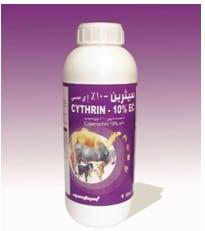
It is a synthetic pyrethroid, indicated for the treatment and control of ectoparasites like ticks, mites, midges, all type of flies and lice in livestock. It acts on sodium channels in insect nerve membranes and cause a nonlethal knockdown effect by peripheral nerve intoxication and a lethal effect that is thought to be associated with both peripheral and central neuronal toxicity in the insects.
Cythrin is recommended to be applied as spray or dip in following dilutions.
B. DIAZIN 600 (Diazinon 60%)

It is an organophosphate and used topically to control ticks, lice, mites, flies, screw worms, stable fly and blow fly larvae. The mode of action is by inhibition of insect acetylcholinesterase and, thus, ultimate block of nerve function (neuromuscular paralysis).
C
C. ECTRAZ (Amitraz 12.5%)
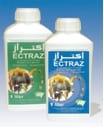
Amitraz is the only formamidine used topically to control the external parasites such as ticks, mites (mange), keds and lice on cattle, camels, sheep, and goats. It may act to inhibit the enzyme monoamine oxidase and as an agonist at octopamine receptors; monoamine oxidase metabolizes amine neurotransmitters in ticks and mites, and octopamine is thought to modify tonic contractions in parasite muscles. Amitraz has a relatively wide safety margin in mammals (19).
RECOMMENDED USAGE:
Cattle and Camels:
Dip and Spray: 1 liter ECTRAZ per 500 liters of water
Dip Replenish: 1 liter ECTRAZ per 250 liters of water
Sheep and Goats:
Spray: Mix 1litre of ECTRAZ in 250 liters of water (0.05). Spray on the animals uniformly, with special emphasis in skin folds.
Dip: Mix 1 liter of ECTRAZ in 250 liters of water. Top-up the dip bath with 1.50 liters of ECTRAZ every time, when the volume of dip falls by 20.
D. Ivermic (Ivermectin)
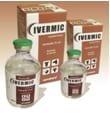
Ivermectin is probably one of the most widely used antiparasitic drugs worldwide, and its efficacy is well established. Ivermectin was first marketed in 1981 by Merck Sharp and Dohme as an antiparasitic agent (20), and it remains the leading worldwide antiparasitic agent for livestock. It has exceptional potency against endo and ectoparasites (endectocide) at extremely low doses, this account for its large margin of safety. It is neurotoxic to parasites by potentiating glutamate-gated chloride ion channels in parasites. Paralysis and death of the parasite is caused by increased permeability to chloride ions and hyperpolarization of nerve cells. It also potentiates other chloride channels, including ones gated by GABA.
Ivermectin is highly effective against many arthropod parasites of domestic animals (Table 3) such as ticks, biting flies, and parasitic dipteran larvae (21, 22&23).
Table 3 (24)
E. Ivermic Super (Ivermectin and Clorsulon)
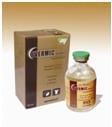
This product has the advantage over ivermic as it has the active ingredient of Ivermic, with Clorsulon, an effective flukicide. Clorsulon is rapidly absorbed into the circulating blood. Erythrocytes with bound drug as well as plasma are ingested by liver flukes that lead to the destruction of the parasite, because of inhibition of enzymes in the glycolytic pathway, which is their primary source of energy.
Dosage and administration:
Cattle and Sheep: 1ml/50 kg bodyweight (based on a dosage level of 200 µg Ivermectin and 2 mg Clorsulon per kg bodyweight) by subcutaneous injection.
F. Closectin (Ivermectin and Closantel)
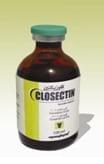
It is indicated for the treatment of mixed trematode (fluke) and nematode or arthropod infestations due to gastrointestinal roundworms, lungworms, eyeworms, warbles, mites and lice of cattle.
Closectin offers all the benefits of Ivermic (Ivermectin) plus control of trematodes as it contains closantel along with Ivermectin. Closantel is a parasiticide with flukicide activity and efficacy against certain other helminths and arthropods. It is lipophilic and is known to shuttle protons across membranes, in particular the inner mitochondrial membrane. Closantel acts by uncoupling oxidative phosphorylation.
Dosage and administration:
Cattle: 200 µg Ivermectin and 5 mg Closantel per kg bodyweight (1ml CLOSECTIN per 25 kg bodyweight), only by SC injection in the neck.
G. Doramec (Doramectin 1%)
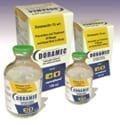
Doramec is indicated for the treatment and control of gastrointestinal roundworms lungworms, sucking lice and mange mites in cattle, sheep and goats.
Mode of action:
It affects the chloride ion channel activity in the nervous system of nematodes and arthropods. It binds to receptors that increase membrane permeability to chloride ions. This inhibits the electrical activity of nerve cells in nematodes and muscle cells in arthropods and causes paralysis and death of the parasites. It also enhances the release of gamma amino butyric acid (GABA) at pre- synaptic neurons. GABA acts as an inhibitory neurotransmitter and blocks the post-synaptic stimulation of the adjacent neuron in nematodes or the muscle fiber in arthropods.
Recommended usage:
200 µg/kg bodyweight (1 ml/50 kg bodyweight) as a single dose by SC or IM route.
Miscellaneous:
H. Diminazine (Diminazine aceturate 7% RTU)

Diminazine aceturate is specially used for the treatment of Babesiosis, Trypanosomosis, Theileriosis and mixed haemoprotozoal infections. Its effect on the Babesia parasites seems to relate to interference with glycolysis, as well as with synthesis of DNA in the parasite while in others it intercalate with DNA and RNA (25).
RECOMMENDED USAGE:
I. Imidol (Imidocarb dipropionate 12%)
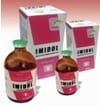
Imidocarb is a carbanilide derivarive with antiprotozoal activity. It is usually administered as the dipropionate salt. It is indicated for the treatment and prevention of Babesiosis in cattle, sheep goat, horses, donkeys, mules and dogs, for the treatment of Anaplasmosis in cattle and Ehrlichiosis in dogs.
The mode of action of Imidocarb is uncertain though two mechanisms have been proposed: interference with the production and/or utilization of polyamines, or prevention of entry of inositol into the erythrocyte containing the parasite.
J. Theilex (Buparvaquone 5%)
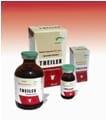
Buparvaquone is a second-generation hydroxynaphthoquinone related to parvaquone, with novel features that make it a promising compound for the therapy and prophylaxis of East Coast fever (Theileriaparva) and Tropical theileriosis or Mediterranean theileriosis (T. annulata).
Recommended usage for Theilex:
1 ml per 20 kg bodyweight (2.5mg/kg bw), as a single dose. In severe cases, the dose may be repeated after 48-72 hours.
References
- 1. Colebrook E and Wall R. (2004) Ectoparasites of livestock in Europe and the Mediterranean region. VetParasitol. 120: 251-274.
- 2. Van den Broek, A.H.M., Huntley, J.F., Halliwell, R.E.W., Machell, J., Taylor, M. and Miller, H.R.P. (2003). Cutaneous hypersensitivity reactions to Psoroptesovis and Der p 1 in sheep previously infested with P. ovis-the sheep scab mite. Vet. Immunol. Immunopathol. 91:105-117.
- 3. Uilenberg, G. (1995) International collaborative research: significance of tick-borne haemoparasitic diseases to world animal health. Vet. Parasitol. 57, 19-41.
- 4. Parola, P., Cornet, J.P., Sanogo, Y.O. and Miller, R.S. (2003) Detection of Ehrlichia spp. Anaplasma spp. Rickettsia spp., and other eubacteria in ticks from the Thai-Myanmar border and Vietnam. J Clin Microbiol. 41:1600-1608.
- 5. Petney, T.N., Kolonin, G.V. and Robbins, R.G. (2007) Southeast Asian ticks (Acari: Ixodida): a historical perspective. Parasitol Res. 101 (suppl 2): S201-205.
- 6. Raoult, D. and Roux, V. (1997) Rickettsioses as paradigms of new or emerging infectious diseases. ClinMicrobiolRev.10:694-719.
- 7. Snelson, J.T. (1975) Animal ectoparasites and disease vector causing major reduction in world food supplies. FAO Plant Protection Bulletin.13:103-114.
- 8. Oliver, J.H. Jr. (1989) Biology and systematics of ticks (Acari:Ixidida). Annu. Rev. Ecol. Syst. 20(1):397-430.
- 9. Merckvet manual
- 10. Radostits, O.M., Gay, C.C., Blood, D.C. and Hinchcliff, K.W. (2003) Veterinary Medicine-A textbook of the diseases of cattle, sheep, pigs, goats and horses. 9th ed. Book Power (Formerly ELST).
- 11. Drummond, R.O. (1983) Tick-borne livestock diseases and their vectors. Chemical control of ticks. Wld. Anim. Rev., (FAO). 36:28-33.
- 12. Stewart, N.P., and de Vos, A.J. (1984) Ticks and the diseases they carry. Queensland Agriculture Journal.110:295-299.
- 13. FAO, 1998.
- 14. Bram, R.A. (1983) Tick-borne livestock diseases and their vectors. 1. The global problem. Wld. Anim. Rev., (FAO). 36:1-5.
- Gabaj, M.M., Beesley, W.N. and Awan, M.A. (1992) A survey of mites on farm animals in Libya. Ann. Trop. Med. Parasitol. 86:537-542.
- Greenberg, B. (1973) Flies and diseases: Princeton University. Press, Princeton, New Jersey.
- Stork, M.G. (1979) The epidemiological and economic importance of fly infestation of meat and milk producing animals in Europe. Vet. Rec. 105:341-343.
- Spickett, A.M. and Fivaz, B.H. (1992) A survey of cattle tick control practice in the Eastern Cape Province of South Africa. Onderstepoort J. Vet. Res. 59:203-210.
- Curtis RJ. (1985) Amitraz in the control of non-ixodide ectoparasites of livestock. Vet Parasitol. 18(3):251-264.
- Steel, J.W. (1993) Pharmacokinetics and metabolism of avermectins in livestock. Vet. Parasitol.48:45-47.
- Campbell, W.C. and Benz, G.W. (1984) Ivermectin: a review of efficacy and safety. J. Vet. Pharm. Therap. 7:1-16.
- Campbell, W.C. (1989) Ivermectin and Abamectin. Springer-Verlag, New York.
- McKellar, Q.A. and Benchaoui, H.A. (1996) Avermectins and milbemycins. J. Vet. Pharm. Therap.19:331-351.
- Canga, A. G., Sahagu´n Prieto, A. M., Lie´bana, M. J., Martı´nez, N. F., Vega, M. S. and Vieitez, J. J. G. (2009) The pharmacokinetics and metabolism of Ivermectin in domestic animal species. The Vet Journal. 179:25-37.
- Barcelo, F. Oritz-Lombardia, M. and Portugal, J. (2001) Heterogeneous DNA binding modes of Berenil. Biochimica et Biophysica Acta, Gene Structure and Expression.1519:175-184.
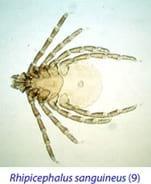


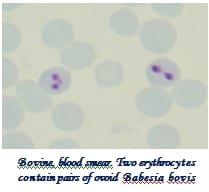
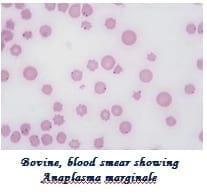
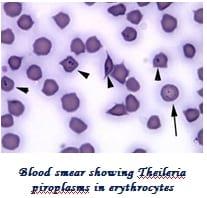
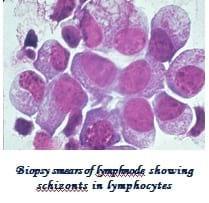
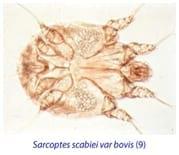


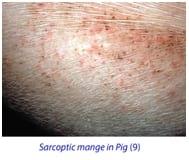
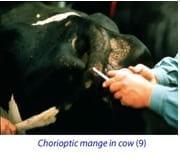
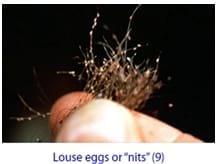
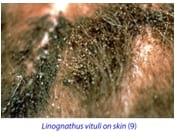

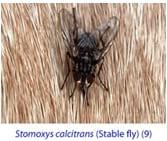
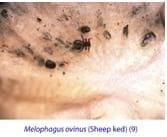



















.jpg&w=3840&q=75)